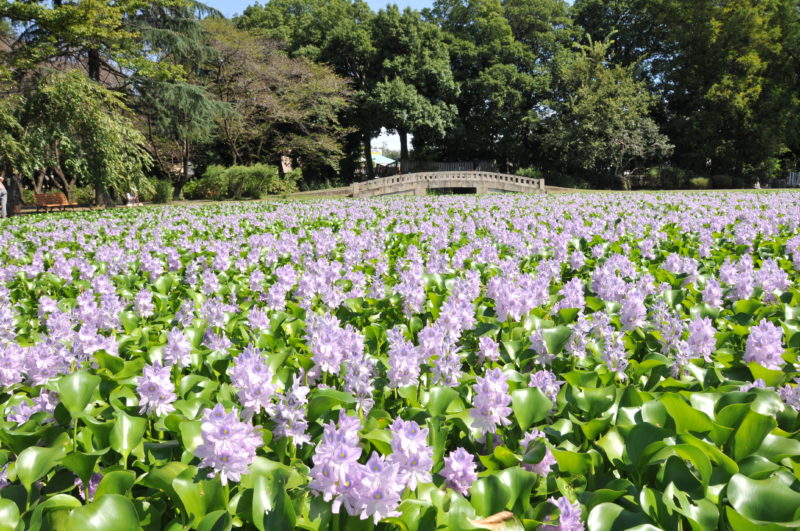Oshi Castle Ruins – Gyōda City Museum
sightseeing
Oshi Castle is one of seven famous castles in the Kanto region, built during the civilization years of the Muromachi period. It is known as an “Uki-jō (Floating Castle),” as it is said to have endured the flooding of Ishida Mitsunari during Toyotomi Hideyoshi’s suppression of Kanto. The story of this castle was the model for the movie “Nobō-no-Shiro (The Floating Castle).” It is currently listed as one of Japan's Top 100 castles. The “Oshijyō Gosankaiyagura (Oshi Castle Three Story Turret)” was torn down during the Meiji period and rebuilt in 1988, with the inside turned into an exhibition room of the local museum, and a view of the entire city can be seen from the top floor.
Basic Information
Location
Gyōda-shi Honmaru17-23
TEL
048-554-5911 (Gyōda City Local Museum)
FAX
048-553-4951 (Gyōda City Local Museum)
Event Information
Every year in the middle of November, "Gyōda Kōgyō (Industry) Matsuri・Oshi Jyō Jidai (Era) Matsuri" takes place
Business hours / Fee
Business hours
・Site of Oshi Castle
Open all day
・Gyōda-shi Local Museum
9:00~16:30
※Please enter before 16:00
Open all day
・Gyōda-shi Local Museum
9:00~16:30
※Please enter before 16:00
Regular holiday
・Site of Oshi Castle
No holidays
・Gyōda Local Museum
Monday (Open on Holidays・Weekends)/The day after a holiday(Open on Saturday and Sunday)/The fourth Friday of each month (Open during a special exhibition)/New Year's Holiday
No holidays
・Gyōda Local Museum
Monday (Open on Holidays・Weekends)/The day after a holiday(Open on Saturday and Sunday)/The fourth Friday of each month (Open during a special exhibition)/New Year's Holiday
Fee
〇Site of Oshi Castle
・No entry fee
〇 Gyōda-shi Local Museum Entry Fee
・Private General 200 yen, University・High School Student 100 yen, Middle・Elementary School 50 yen
・Group (More than 20 people) General 160 yen、University・High School 80 yen, Middle School ・Elementary School 40 yen
※All prices include tax
・No entry fee
〇 Gyōda-shi Local Museum Entry Fee
・Private General 200 yen, University・High School Student 100 yen, Middle・Elementary School 50 yen
・Group (More than 20 people) General 160 yen、University・High School 80 yen, Middle School ・Elementary School 40 yen
※All prices include tax
How to get there
Public transport
〇 From Gyōda Station of JR Takasaki Line
・Get off at “Oshijyō-shi・Kyoudo Hakubutsukan-mae” of Local Loop Bus’s course (counterclockwise) circling in the west direction
・Get off at “Gyōda-shi Bus Terminal” of the Local Loop Bus’s course (clockwise) circling in the west direction and walk for about 5 minutes
・Get off at “Gyōda-shi Bus Terminal” of the Local Loop Bus’s course circling around tourist destinations (clockwise) and walk for about 5 minutes
〇 From Fukiage Station of JR Takasaki Line (North Exit)
・Take the Asahi Bus (en route Maetani) headed for Gyōdaorikaeshiba・Gyōda-shi Eki・Sōgō Kyōiku Center and get off at “Oshijyō”
・Take the Asahi bus (en route Sama) headed for Gyōdaorikeaeshiba・Sōgō Kyōiku Center・Kōgyō Danchi and get off at “Shinmachi 1 Chome” and walk for about 10 minutes
〇Approximately a 15 minute walk from “Gyōda-shi Station” (South Exit) of Chichibu Railway
・Get off at “Oshijyō-shi・Kyoudo Hakubutsukan-mae” of Local Loop Bus’s course (counterclockwise) circling in the west direction
・Get off at “Gyōda-shi Bus Terminal” of the Local Loop Bus’s course (clockwise) circling in the west direction and walk for about 5 minutes
・Get off at “Gyōda-shi Bus Terminal” of the Local Loop Bus’s course circling around tourist destinations (clockwise) and walk for about 5 minutes
〇 From Fukiage Station of JR Takasaki Line (North Exit)
・Take the Asahi Bus (en route Maetani) headed for Gyōdaorikaeshiba・Gyōda-shi Eki・Sōgō Kyōiku Center and get off at “Oshijyō”
・Take the Asahi bus (en route Sama) headed for Gyōdaorikeaeshiba・Sōgō Kyōiku Center・Kōgyō Danchi and get off at “Shinmachi 1 Chome” and walk for about 10 minutes
〇Approximately a 15 minute walk from “Gyōda-shi Station” (South Exit) of Chichibu Railway
Car
・About 25 minutes from "Hanyū" Interchange of Tohoku Expressway ・About 40 minutes from "Higashi Matsuyama" Interchange of Kan-Etsu Expressway ・About 30 minutes from "Okegawa-Kitamoto" Interchange of Ken-o Expressway
Parking
All free
・P1 Bus 4 spaces, Regular car 33 spaces
・P2 Regular car 23 spaces, Regular cars for individuals with a disability 1 space
・P1 Bus 4 spaces, Regular car 33 spaces
・P2 Regular car 23 spaces, Regular cars for individuals with a disability 1 space
Other
Foreign language support
Information on exhibits in the Gyōda City Local Museum can be provided in English, Chinese, Korean, Spanish, and Portuguese using an audio guide.
Universal design
Wheelchair-accessible slope
〇
Wheelchair entry
〇
Voice guidance
〇
Wheelchair parking
〇
Compatible with diaper changing tables
〇












